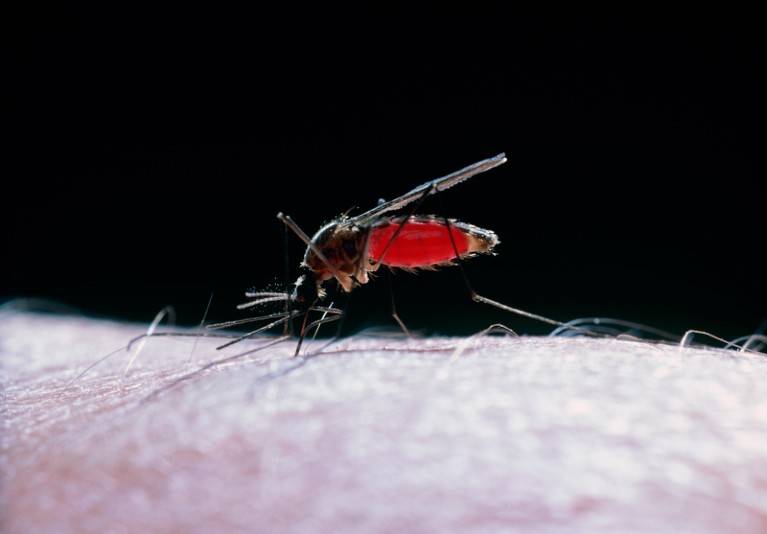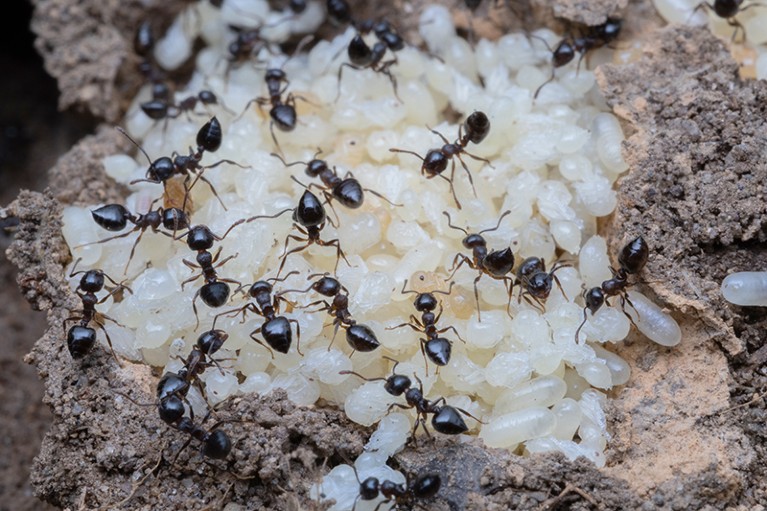[ad_1]

Blood from a mosquito’s most recent meal contains antibodies from the person or animal the insect feasted on.Credit: Claude Nuridsany & Marie Perennou/SPL
Mosquito blood meals reveal history of human infections
Blood-sucking mosquitoes have their uses. An innovative approach that analyses their last blood meals can reveal evidence of infection in the people or animals that the flying insects feasted on.
Scientists say that the method could be used to study people’s and animals’ past exposure to a range of pathogens, while avoiding the ethical and practical issues of testing them directly.
Researchers have previously detected exposure to pathogens by testing blood from mosquitoes for antibodies, markers of past infection that can circulate in blood for months to years, from specific animal hosts.
The technique used by Carla Vieira, a disease ecologist at the QIMR Berghofer Medical Research Institute in Brisbane, Australia, can detect antibodies in blood from a range of animals and people.
She focused on Ross River virus, a potentially debilitating mosquito-borne disease that is endemic to Australia and islands in the southern Pacific Ocean.
Vieira and her colleagues trapped roughly 55,000 mosquitoes in parks in Brisbane in 2021 and 2022. From those insects that had recently had a meal, they squeezed out a couple of millilitres of blood and tested it for antibodies that can bind to Ross River virus. They also sequenced DNA fragments in the blood to identify the animal that the insect had feasted on.
In preliminary results presented at the International Congress of Infectious Diseases in Kuala Lumpur in November, Vieira reported that 480 of the trapped mosquitoes were engorged with blood. More than half of those had fed on people, some 9% on cows and 6% on kangaroos, among other animals. Of the 253 samples containing blood from people, more than half included antibodies against Ross River virus — “a really high population”, she says. Close to three-quarters of the cows and kangaroos also had evidence of exposure.
“This is a novel and fascinating approach, which demonstrates innovative ways to use the environment around us to learn more about exposure to infection,” says Shelly Bolotin, a vaccine scientist at the University of Toronto in Canada.

Inside an ant-nest chamber, adult workers tend to pupae.Credit: Daniel Kronauer
Mysterious ‘milk’ from ant pupae helps feed colony
For the first time, researchers have observed ants secreting a milk-like fluid that nourishes others in the colony.
The research, published on 30 November (O. Snir et al. Nature https://doi.org/jpb8; 2022), reveals that as pupae — an otherwise inactive developmental stage — ants produce a nutrient-rich fluid that is consumed by both adults and larvae.
Newly hatched larvae depend on this fluid to grow and survive, akin to how mammalian newborns depend on milk. If the ant adults and larvae do not consume the fluid, it builds up and becomes contaminated with fungi, which kill the pupae.
“We identified a mechanism that unites the colony, binding ants across developmental stages — adults, larvae and pupae — into a coherent entity, the superorganism,” says co-author Orli Snir, a biologist at the Rockefeller University in New York City.
“It is really surprising that nobody else noticed this before,” says Patrizia d’Ettorre, an ethologist at Sorbonne Paris North University, France. “The pupae were considered useless [because] they are immobile, they spin a cocoon around them in some species, they don’t eat, they’re just moved around by the [ant] workers, so they [wouldn’t] contribute anything to ant society. But this paper shows that this is not true.”
[ad_2]
Source link

